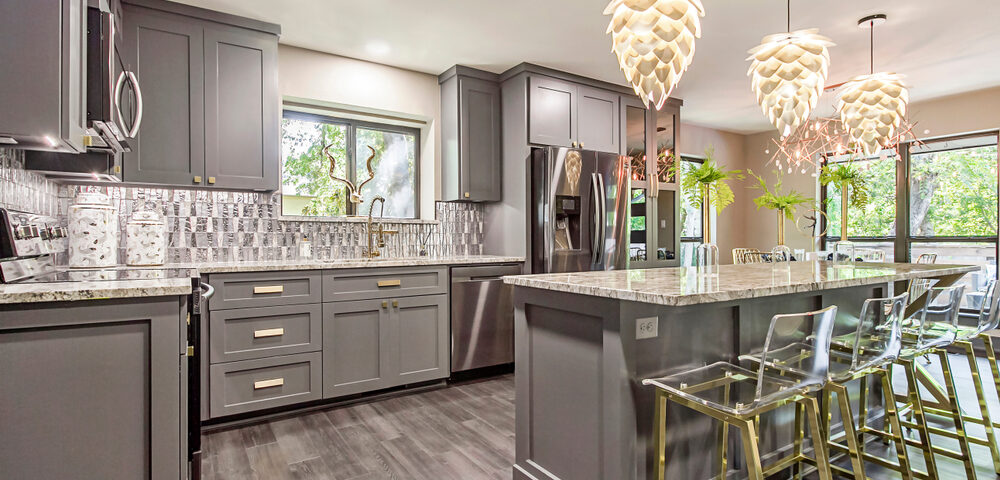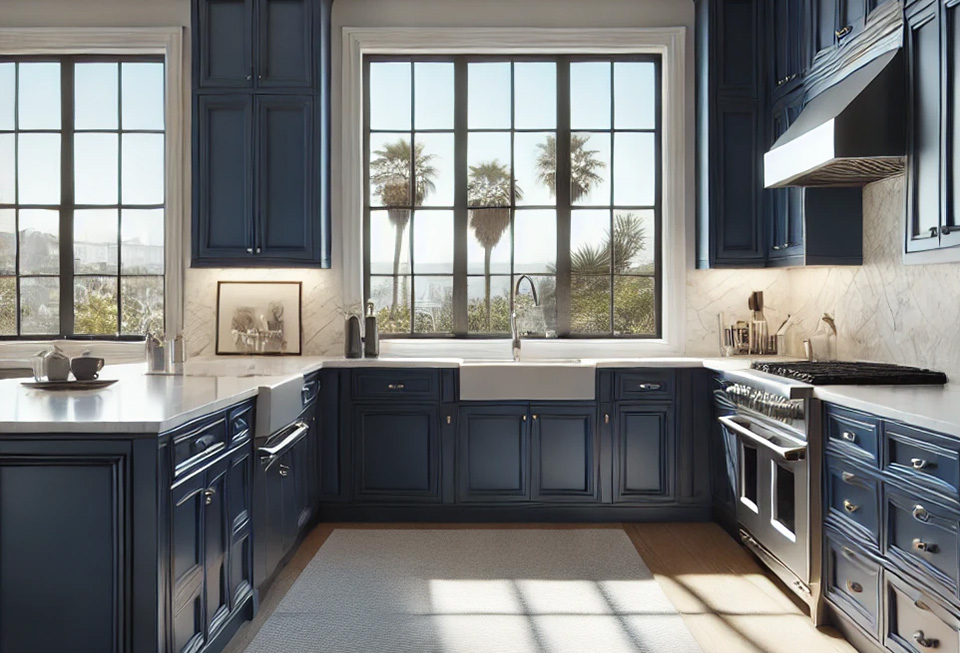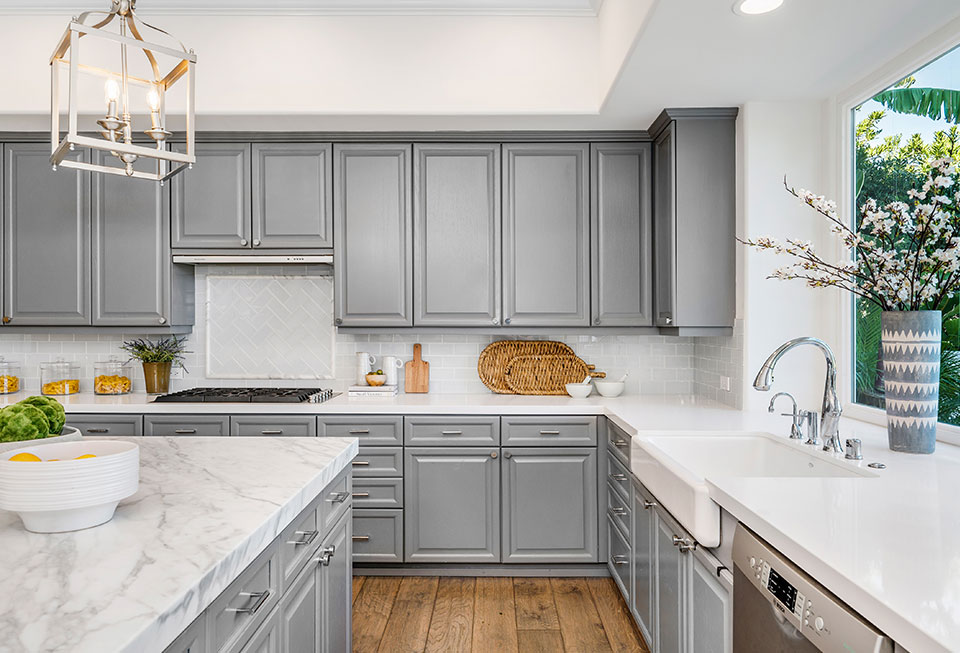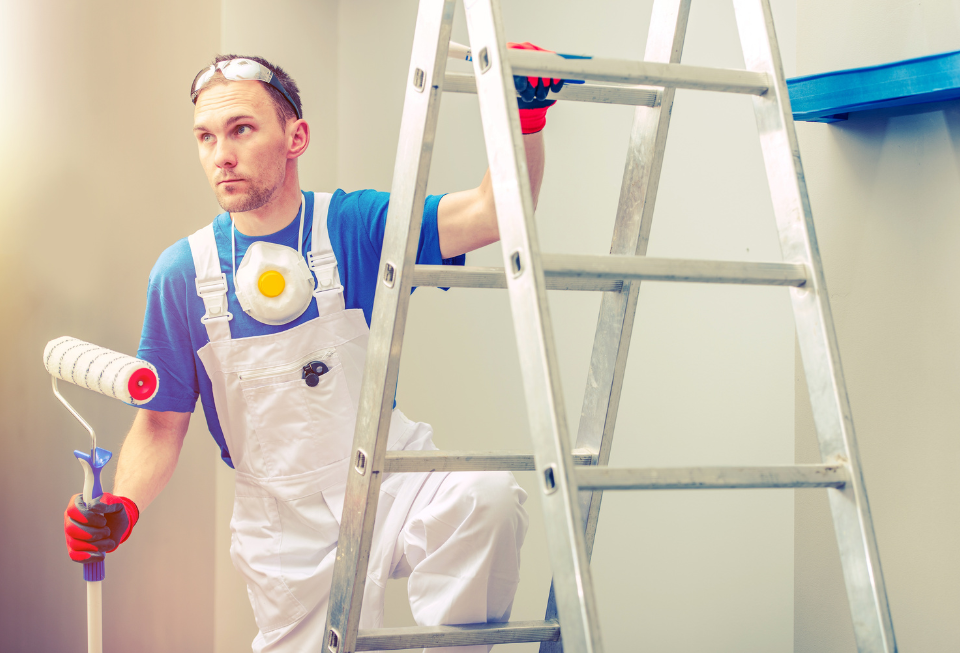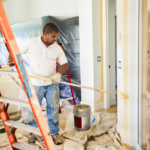
Wood repair in San Diego: 5 tips for repairing damaged wood in your home
July 2, 2022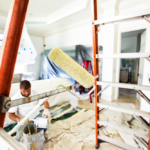
Interior painting in San Diego: interior painting mistakes you should avoid
July 6, 2022Cabinets are a big part of any kitchen. They aren’t just convenient for storing kitchen appliances—they also add to a kitchen’s overall aesthetic appeal.
Like any other part of a home, your kitchen cabinets will start to show signs of wear and tear. This isn’t surprising as a lot of activity takes place in kitchens, so scrapes and scratches are nearly unavoidable in a busy kitchen.
Replacing your tired old cabinets might seem like the right thing to do, but this is costly and it can be difficult to find new cabinets with a design similar to your existing ones.
Try cabinet painting instead. 🙂
Giving your kitchen cabinets a fresh new paint job is a great way to breathe new life into them while saving money and time spent looking for new ones. Here are some useful tips from cabinet painting experts in San Diego.
Wash away the grease
Over the years, oil droplets from cooking will settle on your kitchen cabinets, and trying to paint over this film of grease will likely ruin your cabinet’s new paint job.
You’ll need to remove the grease.
A dedicated grease remover should remove the oil easily, but if you don’t have any in the house, some dishwashing liquid will work too. Just mix the dishwashing liquid with clean water and gently scrub away the grease with a sponge or cleaning rag.
To wash your cabinets more thoroughly, it’s best if you take them apart first and clean each individual part. Make sure to only start priming and painting once the cabinet parts are all completely dry.
Don’t overdo the sanding
It’s always a good idea to sand your cabinets before painting them, but you shouldn’t wear them down right to the bare wood. Too much sanding could damage your cabinets.
Do some light sanding using 120-grit sandpaper. If the cabinets’ surface is already a bit bumpy and uneven from a previous paint job, sand them using 100-grit sandpaper first to remove any bumps, and then switch to 120-grit sandpaper to get rid of sanding marks.
Patch up open-grain wood
Depending on the type of wood your kitchen cabinets are made of, you might notice pores on the surface. This is a very common problem with oak and these pores tend to become noticeable under the paint.
While there’s nothing wrong with the pores showing, if you want your cabinet to have a smooth grain-free surface, you’ll need to fill in these pores before you paint. All you need to do is apply a few coats of high-build primer and do some sanding between each coat until all the pores are filled up.
You could try using spackling paste too, but applying the paste can be tricky when your cabinet has molding or curves.
Use a paint sprayer
Not everyone has a paint sprayer, this is true, but sprayers can make your cabinet painting job much faster. The paint sprayer allows you to achieve a smooth finish for your cabinets, especially when you use a paint roller or brush afterward.
Using a sprayer can get a little messy, so make sure you have drop cloths and a tarp to cover parts of your home that you don’t want to get any paint on.
Utilise the right painting technique
If you’re going to paint the old-fashioned way with a paintbrush, make sure to carefully follow the direction of the wood grain when painting detailed or recessed areas of the cabinet.
Once this is done, use a foam roller to paint the flat areas of your cabinets, and then use a paint roller to smooth out any overlapping brush strokes or paint drips.
Let the pros help you with cabinet painting
Painting cabinets can be tricky to do on your own, especially when you don’t have much experience with these kinds of tasks. Speak with a professional painting company to give your painting project an expert’s touch. 🙂
